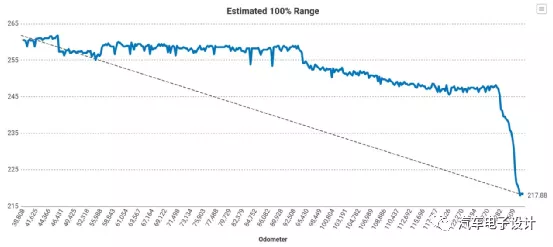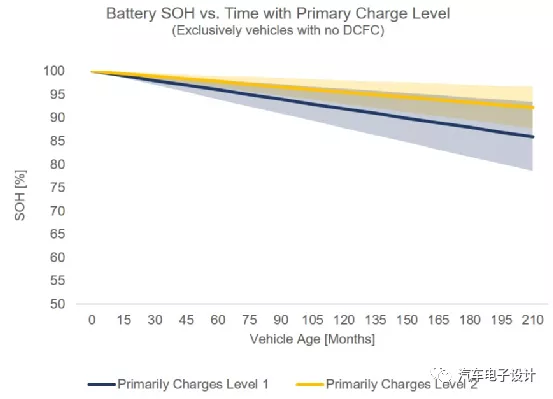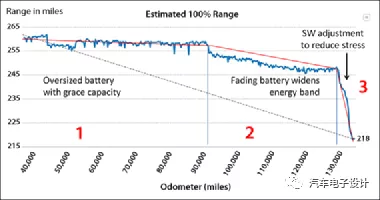From a global perspective, Tesla’s approach has set a precedent for car manufacturers. For example, in the past, for safety reasons, Tesla limited the capacity and charging speed of the battery system through software updates (2019.16.1 and .2). This caused many car owners to protest, and after a first round of tug-of-war, a Norwegian court ruled that thousands of affected car owners should be compensated $16,000 each.

Tesla’s approach is not sustainable
Regarding the “impact of Tesla’s battery use restriction updates” and “Tesla’s remote control of battery SOH,” as we discussed before, we need to objectively consider the safety and performance degradation of batteries after a period of use. The attenuation of battery capacity is inevitable from actual experiments. As the battery continues to be used, its fast charging power will also converge.
Our biggest challenge before was how to protect the battery, that is, what time point and through what means to enable customers to understand the characteristics of the battery.
1) For traditional car manufacturers, a large amount of experimentation and verification is needed in the early stage, and data is used to speak. The corresponding method is mainly to promise a battery warranty period of several years and kilometers, and promise that the battery attenuation will not exceed a certain percentage. Generally speaking, the SOC window in the battery management system is kept small to ensure that the attenuation is uniform over a long period of time. At the same time, the characteristics of battery SOH are reflected in real-time to give consumers an objective and normal attenuation process.
Therefore, as shown in the figure below, for a car manufacturer, hiding some electricity in the early stage and then letting it attenuate under low temperature and uniformly might be more advantageous. In fact, under the premise of fixed vehicle weight and driving system efficiency (there may be differences between 400 V and 800 V systems, as well as between sedans and SUVs, but the differences between similar models are not large), absolute mileage corresponds to absolute electrical quantity. If we are too aggressive in the early stage, we need to find a way to compensate in the later stage.
 ### Translation
### Translation
2) Tesla’s strategy is quite interesting. Taking the Model S 85 kWh battery as an example, Tesla divides the entire lifespan into three phases. In the first phase, a stable mileage of about 95,000 miles is displayed on the dashboard without showing any mileage degradation. In the second phase, from 95,000 miles to 130,000 miles, Tesla reduces the range by 5% and then, in the third phase, at around 130,000 miles, the software directly reduces the capacity and displays the range reduced by about 10%. The corresponding battery management strategy is to initially widen the SOC window as much as possible, adjust it according to version updates, and limit it based on usage time and mileage in different regions, giving a sharp reduction feeling.

What does the lawsuit mean
Due to the above strategy, people feel that after a software update, the driving range of electric vehicles will decrease significantly, ranging from 12 miles to 30 miles. Even if automakers attribute the purpose of the software upgrade to “protecting the battery and improving its lifespan,” users do not accept it. They are demanding a detailed explanation of this behavior, which has led Tesla to face a series of lawsuits in different markets, demanding compensation for owners’ losses. Starting from Norway, the issue will certainly lead to a broad range of lawsuits in other markets such as Europe, the US, and other regions.
Our problem is similar, in that many auto manufacturers had to recall vehicles due to fire safety issues. The handling method of many automakers was to provide free inspection and maintenance of the power battery and replace the module or battery pack if necessary, while upgrading the control strategy software to eliminate security risks. This software control strategy is essentially reducing capacity and charging speed. From the current situation, this approach will not work outside of China.
Summary
In the past, retiring batteries was a way to protect the vehicle and was based on Tesla’s exploration. However, now that it has been globally challenged by consumers in court, this method has been blocked. This means that we have to go back to larger SOC windows and transition to relatively smaller ones.
This article is a translation by ChatGPT of a Chinese report from 42HOW. If you have any questions about it, please email bd@42how.com.